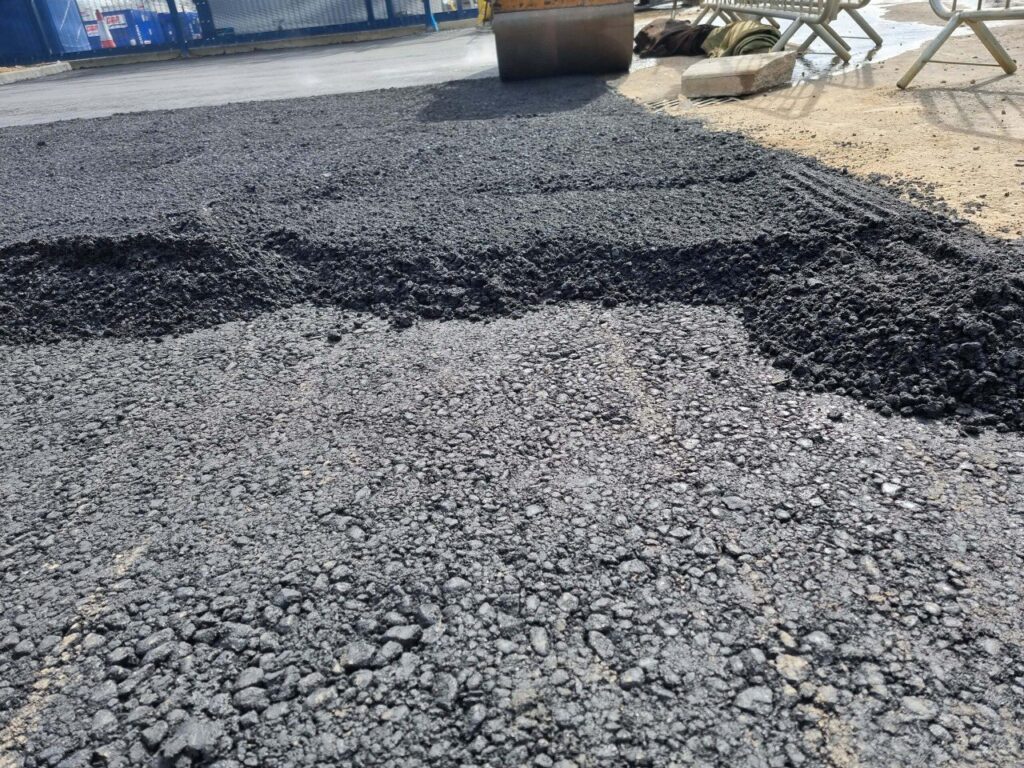Tarmac Roadway Rehabilitation: Upgrading Aging Infrastructure
Introduction: As time passes, even the most well-constructed tarmac roadways can show signs of wear and ageing. Cracks, potholes, and surface deterioration can pose safety hazards and hinder smooth transportation. In response, tarmac roadway rehabilitation becomes essential to restore the infrastructure to its optimal condition. In this blog post, we’ll explore the importance of upgrading ageing tarmac roadways and the rehabilitation methods employed.
The Importance of Tarmac Roadway Rehabilitation
Safety Enhancement: Aging tarmac roadways often develop cracks and potholes that pose risks to drivers and pedestrians. Rehabilitating these roads improves safety by providing a smoother, more predictable driving surface.
Cost Savings: Timely rehabilitation can save money in the long run. Neglecting road maintenance can lead to more extensive damage and costly repairs. By addressing issues early, rehabilitation projects are more cost-effective.
Environmental Benefits: Efficient tarmac road rehabilitation minimises the need for completely reconstructing roads, reducing material waste and environmental impact. Sustainable practices, such as recycling old tarmac materials, are employed to lessen the carbon footprint of rehabilitation projects.
Tarmac Roadway Rehabilitation Methods
Surface Resurfacing: Surface resurfacing involves applying a new layer of tarmac over the existing roadway. This method is effective for addressing surface cracks and minor wear and tear. It improves road smoothness and enhances driving comfort.
Pothole Repair: Potholes are common on ageing roads. Rehabilitation teams remove damaged tarmac sections, repair the underlying foundation, and replace it with new tarmac. This method restores the road’s integrity and safety.
Crack Sealing: Cracks in the tarmac are sealed to prevent water infiltration, which can exacerbate damage during freeze-thaw cycles. Crack sealing is a preventive measure to extend the road’s lifespan.
Full-depth Reclamation: In cases of extensive damage, full-depth reclamation may be necessary. This method involves pulverising the existing tarmac and mixing it with new materials to create a stable base for a new road surface.
Overlay Construction: Overlay construction involves placing a new layer of tarmac over the existing road. It strengthens the road structure, improves durability, and extends the road’s lifespan.
Recycling and Sustainability: Sustainable practices are increasingly incorporated into tarmac roadway rehabilitation. The recycling of old tarmac materials reduces waste and conserves resources. Warm-mix asphalt, which requires lower temperatures for production, reduces energy consumption and emissions.
Conclusion: Tarmac roadway rehabilitation is crucial to maintaining and upgrading ageing infrastructure. It enhances safety and driving comfort and contributes to cost savings and environmental sustainability. At Maidstone Driveways & Surfacing, we understand the importance of efficient and eco-friendly tarmac roadway rehabilitation. Our experienced teams employ innovative methods to revitalise ageing roadways, ensuring they continue to serve communities safely and efficiently for years to come.
Call us on: 01622 938 289
Click here to find out more about Maidstone Driveways & Surfacing
Click here to complete our contact form and see how we can help with your driveway needs.

